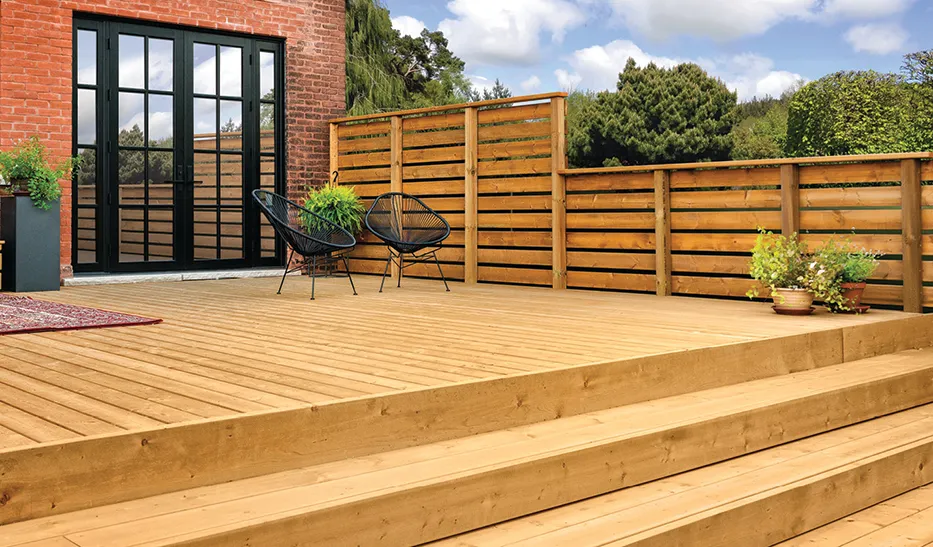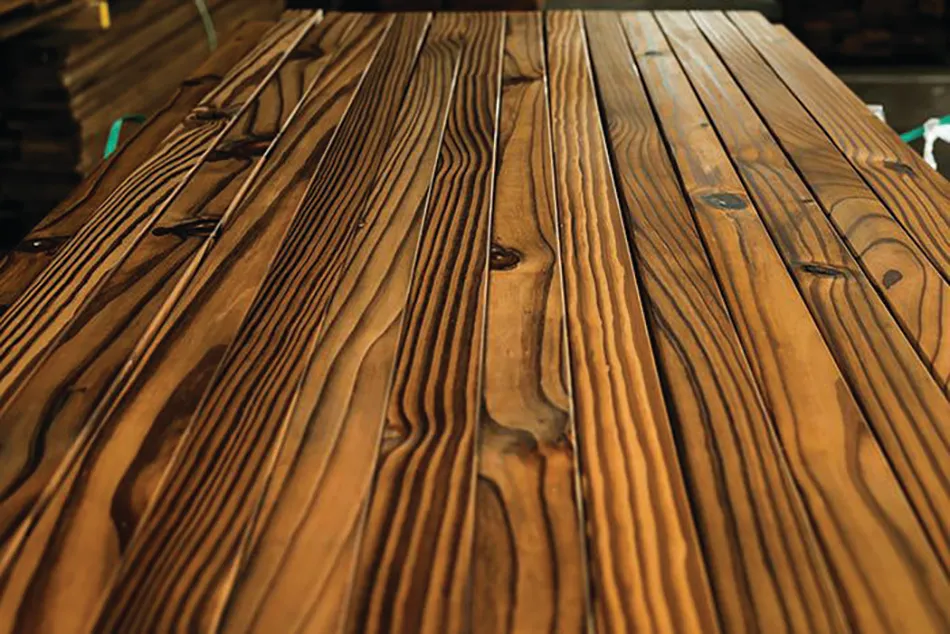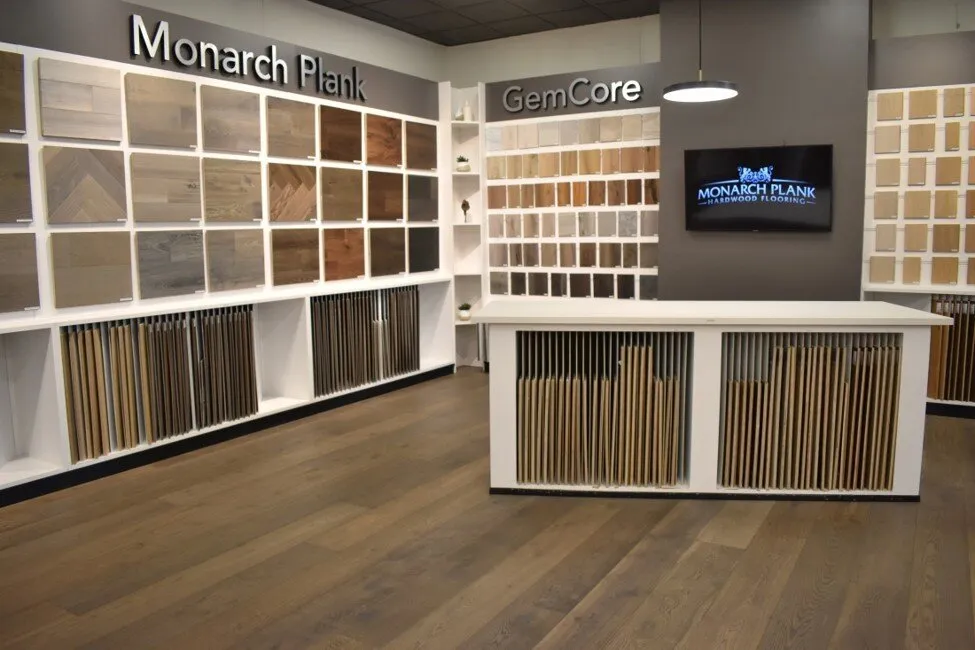All pressure treated lumber is not equal. Beyond preservative type and retention level, wood preserving companies are increasingly adding “extras” to their treatments to make their products more durable and more attractive. In adding colorants, water repellents, stabilizers and mildewcides, commodities suddenly become something more.
Colorants—usually redwood or cedar hued—can be added during treatment or a pre-stain can be applied prior to treatment, saving the builder from having to finish it on site. They are perhaps the most widely accepted add-on to treated wood, at least within certain regions.
“Colored wood is available in decking, dimensional lumber, timbers and deck specialties. Regardless of whether a deck is built with cedar, redwood or composite decking on the surface, the treated wood understructure can now match the decking material.”
Koppers’ MicroPro Sienna is the leading pigmented treated wood in Canada, “with a 90% market share,” according to Horvat.
Lonza markets wood treated with its Tanatone color technology under its Wolmanized Outdoor Wood brand. Similarly, Wolmanized wood is also available with Lumbrella Plus water repellent or BARamine, which provides improved penetration, stabilization and moldicide protection.
“Each dealer is different in what they stock based on their sales and the space they have in their lumber aisle,” said Lonza’s Belinda Remley. “Often, the add-ons available are dependent on what their treater partner offers.”
Treated wood with water repellent is generally available without having to special order.
Offering “better lumber” can become the calling card of an independent dealer. “I stock only #1 grade KDAT in my 2x lumber,” said Jim Pearce, owner of Pearce Lumber Co., Ruston, La. “I also stock premium deck boards & C&B 1x boards with the water repellent. My customers expect a better product than the box stores.”
The key to selling such upgraded options is to ensure end-users are aware of their benefits—and simply that they are available.
“Most homeowners think treated wood is all the same,” said Viance director of marketing Edie Kello. “And in a lumberyard, material is stored outside under sheds without point-of-sale materials, so even contractors may not know the added benefits some chemicals in preservatives offered. There are differences.”
At Lowe’s, Viance has bundle placards and literature that clearly spell out the advantages of Severe Weather with Ecolife, “the only treatment with an integrated water repellent standardized by the AWPA.”
The challenge—or opportunity—remains. Few of the dealers contacted by Building-Products.com had the value-added treated products in stock. Several dealers were convinced their customer base would not bear the increased cost.
William Crosby, manager of County Building Center, Madill, Ok., said customers rarely ask for anything extra. “The current climate for yellow pine treated lumber has been more focused on product availability and said product in the prioritized #1 rating lumber,” he explained. “However, if a request for a product comes in a special order, I am up front with cost and whether such cost is warranted for the project.”
The recent run on treated wood has left many dealers with diminished access to treated wood of any kind. “The past nine months has been a challenge getting any pressure treated at all,” said Jim Bruneau, manager of Middleton Building Supply, Dover, N.H. “I am not sure if treaters in my area are even offering any. I can’t imagine what the premium price would be considering PT lumber doubled in price over the summer.”









